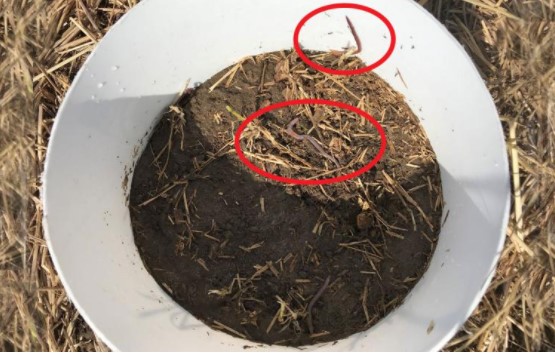By Debankur Sanyal and Johnathon Wolthuizen et.al
Agriculture in the twenty first century integrated natural resources conservation while pushing the boundaries in global crop production. Building better soil health has become more and more important in the past few decades with regenerative agriculture being promoted by scientists all around the world. Healthy soils are those that are full of optimally functioning natural organisms from the microscopic all the way up to gophers and badgers; earthworms are one of the most important factors in the health of soil.
Earthworms are ‘very special’ creatures on earth and their contribution in soil nutrient cycling and fertility management has been acknowledged from the beginning of agriculture. It is often said that in no-till farming, the tillage is done by earthworms. In search of food and water, earthworms move through the soil while they burrow a series of tunnels, improving soil porosity and ultimately soil health. Their activities above and below ground speed up the breakdown of organic materials in the soil and improve carbon and nutrient status and availability to the crops.
So, the question needs to be asked, how can we help improve earthworm populations? Of course, the best thing we can do to help earthworm populations is to stop doing tillage, but is there more we can do? We chose to look at cover crops as a way to increase earthworm populations as the additional biomass and living roots might improve earthworm population and activity. Therefore, we conducted a study to understand the impact of cover crops on earthworm populations in Eastern S.D. crop lands.

Figure 1. Counting earthworms after pouring mustard-vinegar solution in the specified area.
In our experiments, earthworm populations varied mostly due to soil conditions from just over 285,000 up to 2,000,000 worms per acre. Our study found that on average, cover crops had more than twice as many earthworms as the no cover crop plots (Figure 2). Therefore, if the goal with no till is to build a healthy soil that promotes earthworms to function to the best of their abilities, then cover crops are essential.
We are extending our study to gather more information on how different cover crop species influence earthworm population and will have a report in the next few years.